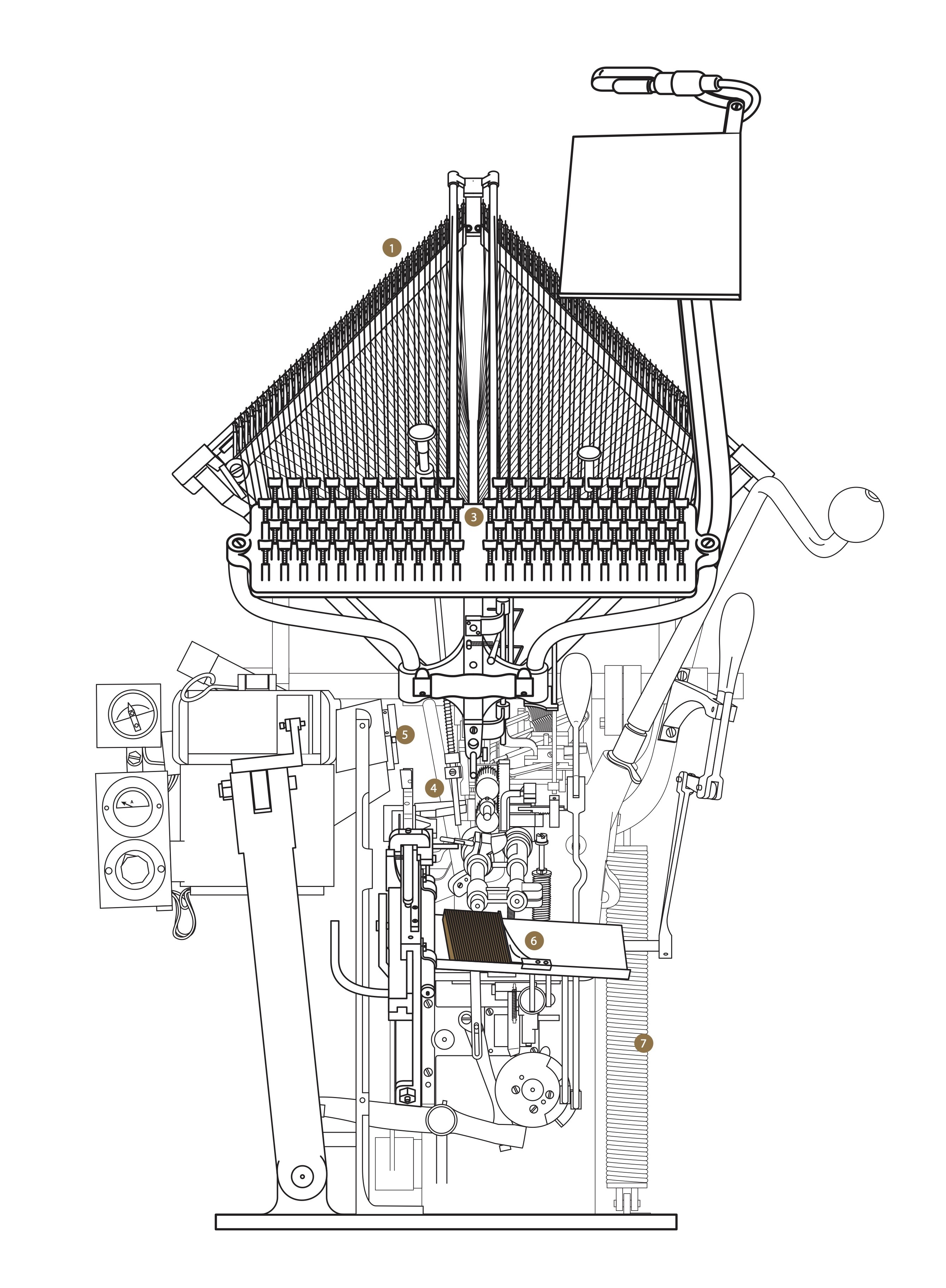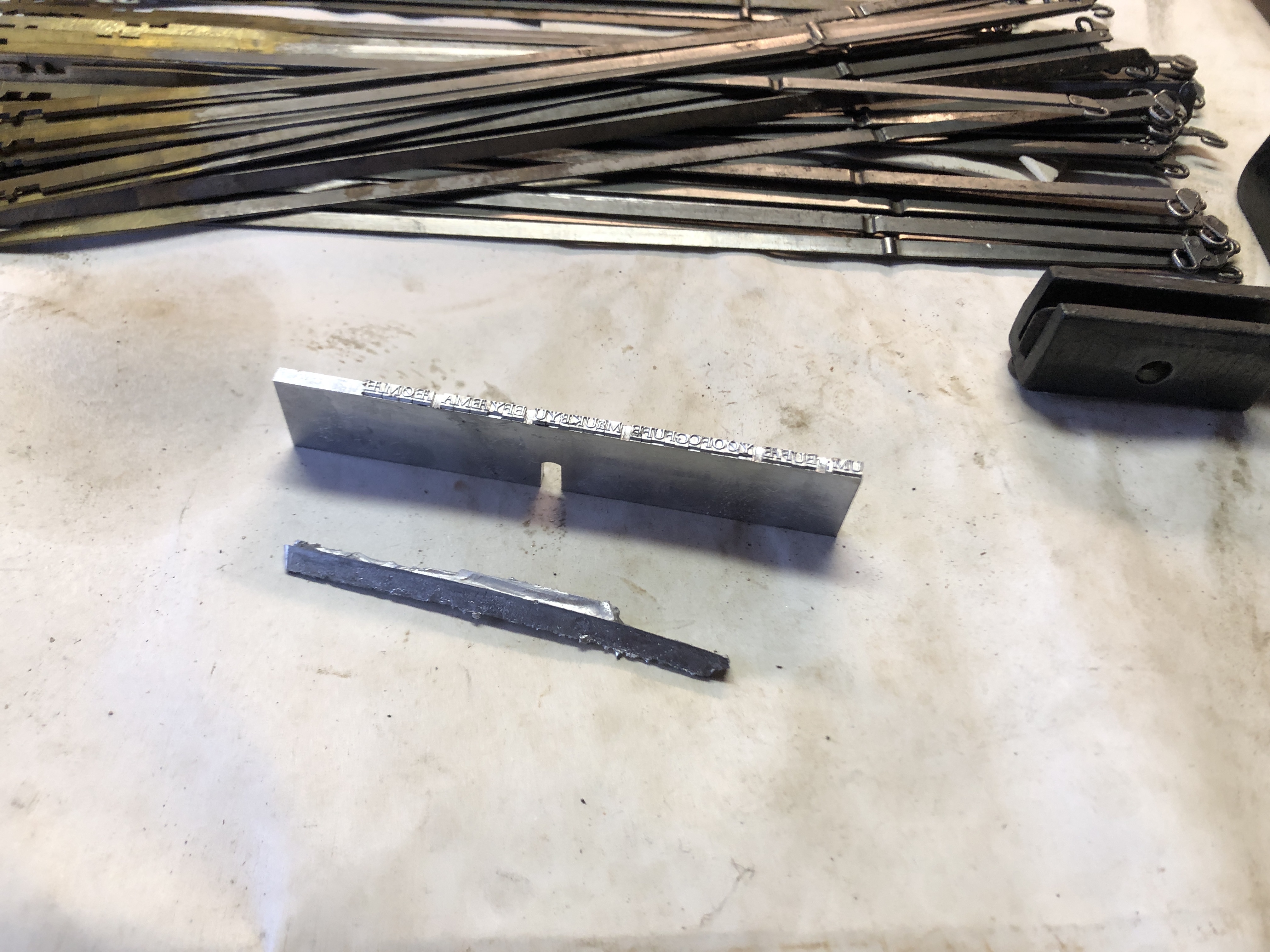The Typograph distinguishes itself by its triangular form. Herein, matrices containing the letterforms are hanging on rods. The machine relies on a keyboard to set matrices in the right order. Thereafter, the machine casts a line of type. To put the matrices back in position, the operator has to tilt the upper part of the machine backwards.

In the machine, matrices are stored in the back of the piramide shape (nr 1). The matrices are set in the correct order using a keyboard (nr 2, see here for the different keyboards per country). When a key is pressed, the correlating matrix glides over a rod to the center of the machine (at nr 3). A disadvantage of the Typograph over the Linotype is that a typesetter has no means to proofread easily.
When a line of type is completed, the machine is started. The machine can run manually (nr 4), or automatically (nr 5). Molten type metal is poured into the matrices to cast a line of type (nr 6). The line of type is called a 'slug'. Those slugs are collected in the front of the machine. Afterwards, the top of the machine tilts backwards. Gravity ensures that the matrices glide back over the rods into resting position.
The output of the machine are 'slugs', lines of type cast in type metal. Those slugs can have different dimensions and type sizes, depending on the design of the page. Note that the type is mirrored. This is because the Typograph is NOT used for printing. It sets type, just like you would do with Microsoft Word. The slugs have to be taken to a printing press, where they are inked and where the letters are printed on paper.
Slugs from a Typograph are often recognizable by the open notch in the middle.

C 2021-2024 Maarten Renckens and other contributors. All rights reserved. All materials on this website are available for non-commercial re-use, as long as the original author is mentioned and a correct reference to this site is added. Thanks!
All materials are considered copyrighted by the author(s) unless otherwise stated. Some materials from other sources are used. If you find materials on this page which you consider not free from copyright, a notification is appreciated.
All collaborations and additional sources are more than welcome. Please contact info@maartenrenckens.com if you have materials that you deem valuable.